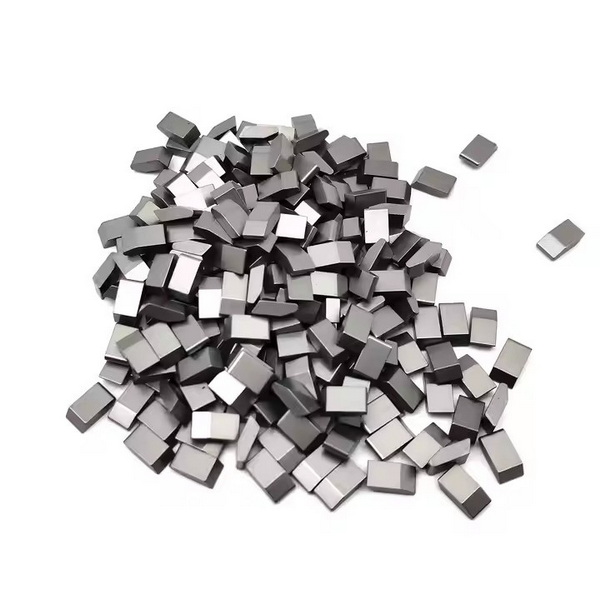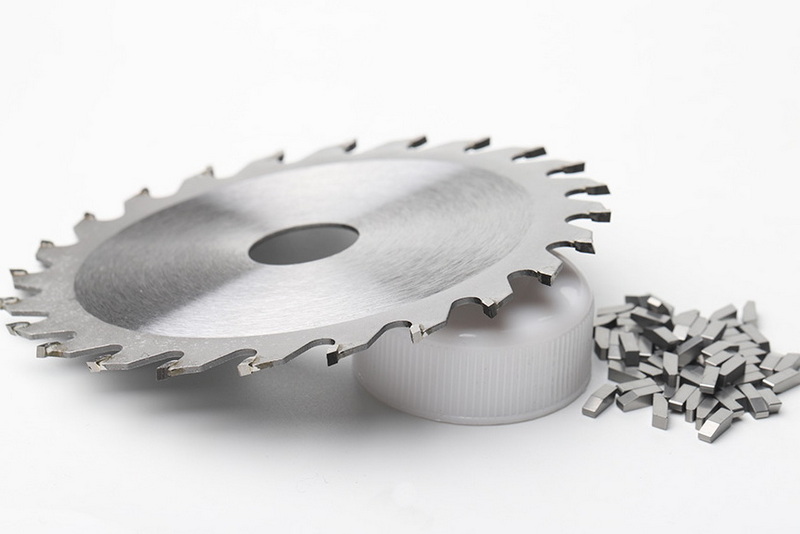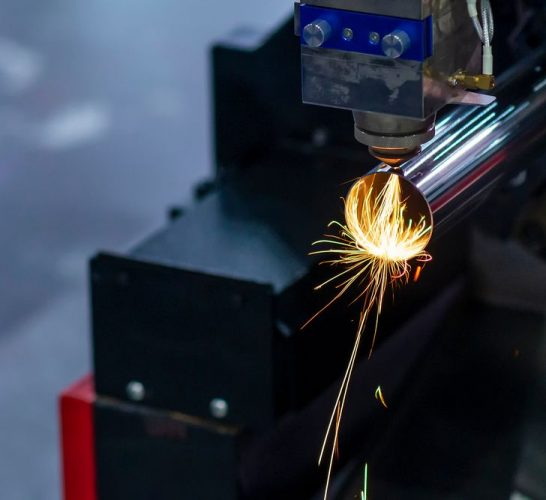Content Menu
● Introduction
● What is Tungsten Carbide?
>> Applications of Tungsten Carbide
● Does Tungsten Carbide Oxidize?
>> Mechanism of Oxidation
● Factors Influencing Oxidation
>> Temperature
>> Oxygen Concentration
>> Material Composition
>> Surface Finish
● Effects of Oxidation on Tungsten Carbide
>> Loss of Hardness
>> Surface Degradation
>> Reduced Longevity
>> Economic Impact
● Enhancing Oxidation Resistance
>> Material Selection
>> Coatings
>> Controlled Environments
>> Post-Treatment Processes
● Recycling Tungsten Carbide
● Future Trends in Tungsten Carbide Research
>> Advanced Coatings
>> Alloy Development
>> Additive Manufacturing
● Conclusion
● FAQ
>> 1. What causes tungsten carbide to oxidize?
>> 2. How does oxidation affect the properties of tungsten carbide?
>> 3. Can oxidation be prevented?
>> 4. Is recycled tungsten carbide less effective than new material?
>> 5. What industries rely on tungsten carbide?
● Citations:
Introduction
Tungsten carbide is a compound made of tungsten and carbon, known for its exceptional hardness and wear resistance. It is widely used in various industrial applications, including cutting tools, mining equipment, and aerospace components. However, one critical aspect of tungsten carbide that impacts its performance is its susceptibility to oxidation. This article explores whether tungsten carbide oxidizes, the mechanisms behind this process, and its implications for various applications.

What is Tungsten Carbide?
Tungsten carbide (WC) is a chemical compound consisting of equal parts tungsten and carbon atoms. It is characterized by:
- High Hardness: Tungsten carbide is one of the hardest materials available, making it ideal for cutting tools.
- Wear Resistance: Its ability to withstand wear and tear extends the lifespan of tools and machinery.
- High Melting Point: With a melting point around 2,870 °C (5,200 °F), it performs well under high-temperature conditions.
Applications of Tungsten Carbide
Tungsten carbide is utilized in various industries due to its properties:
- Cutting Tools: Used in drills, saws, and milling machines.
- Mining Equipment: Essential for tools that endure harsh conditions.
- Aerospace Components: Employed in turbine blades and engine parts due to its strength and heat resistance.
- Jewelry: Increasingly popular in the jewelry industry for wedding bands due to its scratch resistance and durability.
- Oil and Gas Industry: Used in drill bits and other components that require high durability under extreme conditions.
Does Tungsten Carbide Oxidize?
Yes, tungsten carbide can oxidize, particularly when exposed to high temperatures and oxygen. The oxidation process involves the conversion of tungsten carbide into tungsten oxide (WO₃), which can significantly affect the material's properties.
Mechanism of Oxidation
1. Initial Exposure: When tungsten carbide is subjected to elevated temperatures in the presence of oxygen, oxidation begins at the surface.
2. Formation of Oxides: The reaction produces tungsten oxides (WO₃) along with other by-products such as cobalt oxide if cobalt is present in the alloy.
3. Surface Degradation: The formation of an oxide layer can lead to brittleness and loss of hardness, ultimately compromising the material's integrity.
Factors Influencing Oxidation
Several factors affect the oxidation behavior of tungsten carbide:
Temperature
Higher temperatures accelerate oxidation rates. For instance, at temperatures above 600 °C (1,112 °F), significant oxidation can occur within a short period.
Oxygen Concentration
Increased oxygen levels lead to more rapid oxidation. Environments with high humidity or moisture can also exacerbate this process.
Material Composition
The presence of cobalt or other metals can alter oxidation pathways. Cobalt acts as a binder in some tungsten carbide formulations but can also contribute to oxidation when exposed to high temperatures.
Surface Finish
The surface finish of tungsten carbide components plays a role in their susceptibility to oxidation. Rough surfaces have more area exposed to oxygen compared to polished surfaces, leading to increased oxidation rates.
Effects of Oxidation on Tungsten Carbide
The oxidation of tungsten carbide can have several detrimental effects:
Loss of Hardness
The formation of tungsten oxide on the surface reduces the overall hardness of the material. This loss affects its performance in applications requiring high wear resistance.
Surface Degradation
Oxidation can create a brittle layer on the surface that weakens the material. This degradation can lead to cracks or breaks under stress, especially in high-pressure environments.
Reduced Longevity
Oxidized components tend to have shorter lifespans due to increased wear and tear. This necessitates more frequent replacements, leading to higher maintenance costs.
Economic Impact
The economic implications of oxidation are significant. Industries relying on tungsten carbide must account for potential failures due to oxidation-related degradation. This includes costs associated with downtime, repairs, and replacements.

Enhancing Oxidation Resistance
To mitigate oxidation issues, various strategies can be employed:
Material Selection
Choosing high-purity tungsten carbide with minimal impurities can enhance oxidation resistance. Additionally, using alloying elements that improve stability at high temperatures can be beneficial.
Coatings
Applying protective coatings can shield tungsten carbide from direct exposure to oxygen. Common coatings include ceramics or other resistant materials that provide a barrier against oxidation. These coatings not only enhance durability but also improve aesthetic appeal in applications like jewelry.
Controlled Environments
Using inert atmospheres during processing or operation can significantly reduce oxidation rates. For instance, environments rich in nitrogen or argon are less reactive than air.
Post-Treatment Processes
Post-treatment processes such as annealing or surface hardening can improve resistance to oxidation by altering microstructural properties and enhancing overall toughness.
Recycling Tungsten Carbide
Recycling processes often involve oxidation methods to reclaim tungsten from scrap materials. The general steps include:
1. Oxidation: Scrap tungsten carbide is heated in an oxidizing atmosphere to convert it into oxides.
2. Grinding: The oxidized material is pulverized into a fine powder.
3. Reduction: The oxides are then treated with reducing agents to recover pure tungsten.
This process not only recycles valuable materials but also minimizes waste. The recycling of tungsten carbide is essential for sustainability in industries that rely heavily on this material.
Future Trends in Tungsten Carbide Research
Research into improving the properties of tungsten carbide continues to evolve. Some promising areas include:
Advanced Coatings
Development of nanostructured coatings that offer superior protection against oxidation while maintaining mechanical properties is underway.
Alloy Development
Creating new alloys that incorporate elements such as titanium or chromium may enhance resistance to both wear and oxidation without compromising hardness.
Additive Manufacturing
Additive manufacturing techniques allow for precise control over material properties during production, potentially leading to more resilient tungsten carbide components that resist oxidation better than traditional methods allow.
Conclusion
In conclusion, while tungsten carbide is renowned for its hardness and durability, it is not immune to oxidation under certain conditions. Understanding the mechanisms behind this process allows manufacturers and engineers to implement strategies that enhance its performance and longevity in various applications. By selecting appropriate materials, applying protective coatings, controlling environmental factors during use, and staying abreast of ongoing research developments, the adverse effects of oxidation can be minimized.

FAQ
1. What causes tungsten carbide to oxidize?
Tungsten carbide oxidizes when exposed to high temperatures and oxygen, leading to the formation of tungsten oxides on its surface.
2. How does oxidation affect the properties of tungsten carbide?
Oxidation leads to a loss of hardness, surface degradation, reduced longevity, and increased economic costs associated with maintenance and replacements.
3. Can oxidation be prevented?
Yes, oxidation can be mitigated through careful material selection, protective coatings, controlled environments during processing, and post-treatment processes.
4. Is recycled tungsten carbide less effective than new material?
Recycled tungsten carbide can be as effective as new material if processed correctly; however, impurities may affect performance if not adequately removed during recycling.
5. What industries rely on tungsten carbide?
Industries such as aerospace, mining, manufacturing, construction, jewelry making, and oil and gas heavily rely on tungsten carbide for tools and components due to its exceptional properties.
Citations:
[1] https://www.carbide-part.com/blog/oxidation-recycling-tungsten-carbide/
[2] https://www.retopz.com/understanding-the-oxidation-resistance-of-tungsten-carbide-an-explanatory-overview/
[3] https://patents.google.com/patent/EP2521799A1/en
[4] https://www.ijert.org/research/oxidation-kinetics-of-tungsten-carbide-20cobalt-composite-using-non-isothermal-thermal-analysis-IJERTV7IS110065.pdf
[5] https://www.carbide-products.com/blog/oxidation-recycling-tungsten-carbide/
[6] https://www.mdpi.com/2571-6131/7/1/11
[7] https://pubs.acs.org/doi/full/10.1021/ja01622a023
[8] https://en.wikipedia.org/wiki/Tungsten_carbide
















